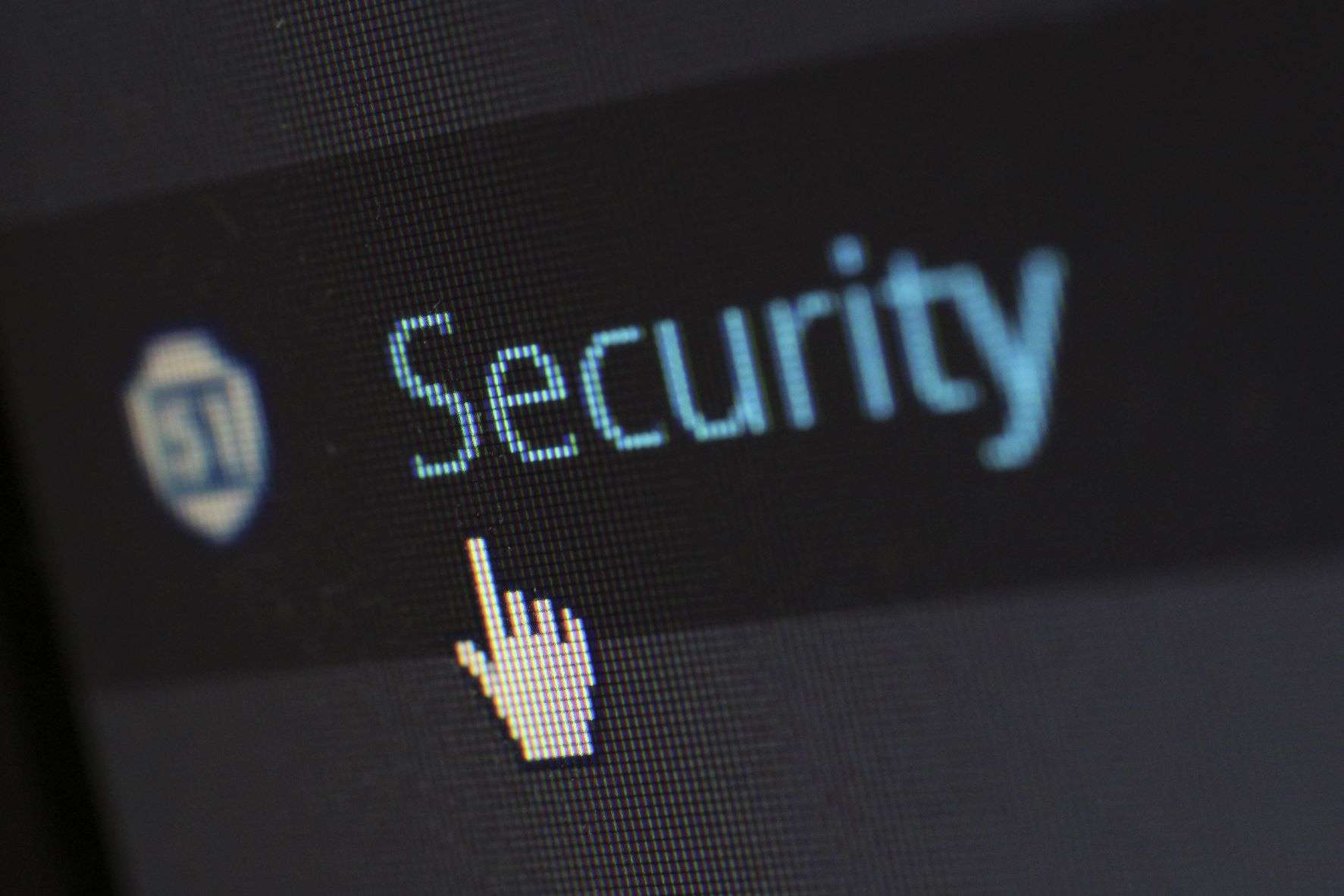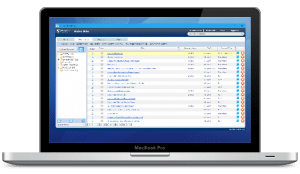What is the Difference Between SOC Type 1 and Type 2 Reports?

To gain a comprehensive understanding of SOC Type 1 and Type 2 reports, delve into the introduction. With a brief explanation of SOC reports, uncover the nuances of these two report types. Discover how each type provides unique solutions to address different aspects of organizational security and compliance. What is the difference between SOC type 1 and type 2 reports?
Explanation of SOC Reports
SOC Reports, or System and Organization Control reports, are important for providing confidence to customers and stakeholders about the organization’s internal controls and security. Auditors who examine the usefulness of such measures create SOC reports. SOC reports demonstrate an organization’s dedication to data security and following regulations.
- SOC 1: Evaluating controls in regards to financial reporting.
- SOC 2: Examining controls related to security, availability, processing integrity, confidentiality, and privacy.
- SOC 3: A summary of the SOC 2 report findings that can be spread freely.
- Creating a SOC report involves finding risks, testing controls, and reporting any weaknesses observed.
- SOC reports help service organizations build trust with customers.
- Clients can use SOC reports to assess a provider’s controls before signing contracts.
Understand that SOC reports are not a one-time thing; they are assessments that occur during specific times. Organizations can stay informed on their control environment’s performance by getting SOC reports regularly.
Pro Tip: When looking at SOC reports, focus on any control problems or exceptions listed. These may point to potential weaknesses that need to be fixed to enhance security.
Overview of SOC Type 1
To gain a clear understanding of SOC Type 1 reports, delve into the definition and purpose of these reports. Explore their key features and characteristics to grasp the nuances surrounding SOC Type 1. This will equip you with the necessary knowledge to differentiate between SOC Type 1 and Type 2 reports effectively.
Definition and purpose of SOC Type 1 reports
SOC Type 1 reports are called System and Organization Control Type 1 reports. They provide information on a service organization’s internal controls and how suitable they are for particular operational objectives. These reports aim to give confidence to users by providing an independent assessment of the service organization’s control environment.
Let’s look at some details:
Definition: Provides an overview of the service organization’s internal controls
Purpose: Assesses the design effectiveness and suitability of controls for operations
Evaluates control environment: Independently to instill user confidence
SOC Type 1 reports show the design of the controls a service organization uses. They focus on assessing if the controls are suitable for operations, helping users to make decisions about risk management and compliance with laws.
Pro Tip: When reviewing SOC Type 1 reports, it is important to check for any weak points in the internal controls. This information can help identify risks and make decisions on how to mitigate them.
Key features and characteristics of SOC Type 1
Table below highlights key features of SOC Type 1:
| Feature | Description |
|---|---|
| Functionality | Offers basic security operations for organizations |
| Monitoring | Monitors & analyzes network traffic for potential threats |
| Incident Response | Handles security incidents quickly & effectively |
| Security Tools | Uses various tools for threat detection & prevention |
| Alerting System | Notifies stakeholders swiftly upon detecting anomalies |
Apart from these features, SOC Type 1 is appreciated for its dependability & efficiency in protecting organizational assets. Its thorough monitoring helps detect cyber threats before any damage is done.
SOC Type 1 has a long history, tracing back to the beginning of computer networks. As the internet became widespread, organizations realized the need for a secure defense against malicious activities.
Overview of SOC Type 2
To gain a comprehensive understanding of SOC Type 2 reports, explore the overview of SOC Type 2. Delve into the definition and purpose of SOC Type 2 reports, as well as the key features and characteristics that set them apart.
Definition and purpose of SOC Type 2 reports
SOC Type 2 reports detail the controls, policies, and procedures present in a service organization, along with testing and assessment results. They serve as a means to provide insights into the effectiveness of these safeguards for protecting customer data and systems.
These reports also offer information on control activities that other compliance documents may not cover. This allows organizations to make informed decisions when outsourcing operations by demonstrating the quality of their controls over a period of time.
To get the most out of SOC Type 2 reports, it is important to:
- Set objectives for control implementation.
- Perform assessments to detect any holes in security.
- Maintain records to back up control statements.
- Utilize industry standards for security and compliance.
By taking these steps, organizations can bolster customer trust and relationships by showing that their controls are reliable. This will ensure that SOC Type 2 reports provide maximum assurance to customers.
Key features and characteristics of SOC Type 2
SOC Type 2 is a powerful, robust system that is highly sought after in the cybersecurity industry. Let’s take a closer look at its key features and characteristics:
| Feature | Description |
|---|---|
| Monitoring and Analysis | Real-time monitoring and analysis of network traffic. Helps organizations identify and respond to potential threats. |
| Incident Response | Dedicated team of experts for effective incident handling. Quick containment and resolution, minimizing business impact. |
| Threat Intelligence | Advanced analytics integrate threat intelligence from various sources. Proactively detect emerging threats to stay ahead of cybercriminals. |
| Compliance Support | Comprehensive support for compliance frameworks like HIPAA and GDPR. Ensures adherence to industry standards and data protection. |
| Continuous Improvement | Improve security posture with insights gained from incident response activities. Enhance security controls and prevention measures. |
In addition, SOC Type 2 boasts other unique qualities. 24/7 monitoring and advanced machine learning algorithms to analyze data rapidly.
The development of SOC Type 2 was a response to the increasing complexity and sophistication of cyberattacks. Traditional security measures proved inadequate. So, SOC Type 2 was created to address modern-day threats and fortify organizational defenses.
SOC Type 2 is a stalwart defender against cyber threats, providing organizations with peace of mind.
Differences between SOC Type 1 and Type 2 reports
To understand the differences between SOC Type 1 and Type 2 reports, delve into the scope of testing and evaluation, timeframe of assessment, level of assurance provided, and usefulness for different stakeholders. Each sub-section offers unique insights into the contrasting aspects of these two report types.
Scope of testing and evaluation
To grasp the divergence between SOC Type 1 and Type 2 reports, it’s helpful to explore their testing and evaluation extent. This analysis highlights their discrepancies in depth and timeframe. As these reports demonstrate a company’s dedication to security and operational controls, understanding their scope is essential.
Let’s simplify this with a table:
| SOC Type 1 | SOC Type 2 | |
|---|---|---|
| Duration | Point-in-time | Period of Time |
| Evaluation | Design effectiveness | Operating effectiveness |
| Control Types | Management | Managed/Automated |
| Entity | Controls by Service Provider | |
| Information measures | Review of description & Comprehensive evaluation | Reimburse (Financial) internal control design |
Besides the distinctions in the table, it’s noteworthy that while SOC Type 1 reports verify control designs, SOC Type 2 reviews go further. They check not only design efficiency but also evaluate operating efficacy over a period.
Here’s an example:
A multinational e-commerce firm, hoping to expand its services, partnered with a CSP. To guarantee superior operational standards and data privacy, they asked for SOC Type 1 and Type 2 reports from the CSP. These reports enabled them to analyze the control environments at various points of interaction. Afterwards, they were satisfied and proceeded with the partnership.
In conclusion, comprehending the scope of testing and evaluation is vital to understanding SOC Type 1 and Type 2 reports. Tailored to particular organizational needs, these distinct examinations cater to different aspects of control assurance.
Timeframe of assessment
The timeframe of assessment is important for SOC Type 1 and Type 2 reports. This determines the reliability and accuracy.
Assessment Timeline:
| SOC Type | Timeframe of Assessment |
|---|---|
| Type 1 | Specific Date or Point-in-time |
| Type 2 | Period of Time (usually at least six months) |
Type 1 reports focus on the controls at a certain moment. Type 2 reports assess the controls’ effectiveness over a period. This ensures potential issues are identified and addressed.
Organizations should conduct regular SOC audits for continuous monitoring and improvement. This allows timely identification and mitigation of risks. An experienced independent auditor can provide unbiased insights and recommendations for optimizing control environments.
Level of assurance provided
SOC Type 1 and Type 2 reports provide a varied level of assurance. This gives stakeholders confidence in the effectiveness of the controls. To understand the difference, let’s check out this table:
| Level of Assurance Provided | SOC Type 1 | SOC Type 2 |
|---|---|---|
| Scope of Assessment | Snapshot | Extended Period |
| Testing Duration | Point in Time | Over a Period |
| Evaluation of Controls | Design | Design and Operating Effectiveness |
| Coverage | Limited time | Continuous |
| Detailed Testing Procedures | No | Yes |
SOC Type 1 assesses the design adequacy of controls on a specific date. Whereas, SOC Type 2 looks at both design and operating effectiveness over an extended period. Type 2 provides more detail and coverage, giving stakeholders more insight into how well the controls operate over time.
Organizations should choose the report that fits their needs for transparency and risk management. Make sure you get the higher level of assurance – choose wisely!
Usefulness for different stakeholders
The usefulness of SOC Type 1 and Type 2 reports differs for different stakeholders. Let’s explore how they meet the particular needs of each stakeholder.
See below for a breakdown of the usefulness of the two reports for the various stakeholders:
| Stakeholder | SOC Type 1 Report | SOC Type 2 Report |
|---|---|---|
| Management | Validates control environment and basic controls | Checks control design over time |
| Customers | Gives assurance of internal controls and security processes | Gives extra insight into an organization’s control environment, building trust in their systems |
| Regulators | Shows evidence of regulatory compliance | Confirms consistent effectiveness of controls |
| Partners | Demonstrates commitment to security and integrity | Shows info on operational practices and security measures |
Moreover, a SOC Type 2 report goes further than the data in a SOC Type 1 report. It covers a longer period, usually six months or more, so stakeholders can see an organization’s control environment across time.
For maximum usefulness, organizations undergoing a SOC audit should:
- Set goals: Clearly state what they aim to achieve through the audit process to meet stakeholders’ needs.
- Document controls: Make sure all relevant controls are fully recorded, increasing transparency and minimizing confusion.
- Monitor control effectiveness: Continuously evaluate control performance to spot areas that need improvement.
- Resolve identified weaknesses: Deal with any weaknesses found during the audit to maintain stakeholder trust.
By following these steps, businesses can get the most out of their SOC Type 1 and Type 2 reports for stakeholders. This proactive approach shows a dedication to security, compliance, and openness, which helps strengthen business relationships.
Similarities between SOC Type 1 and Type 2 reports
To understand the similarities between SOC Type 1 and Type 2 reports, delve into shared requirements and standards, and recognize the importance of these reports in assessing service organizations. This section explores the commonalities between the two reports, shedding light on their significance in evaluating and ensuring operational integrity.
Common requirements and standards
Let’s structure the common requirements and standards between SOC Type 1 and Type 2 reports. Here’s the list:
- Trust Services Principles and Criteria
- System Description
- Effectiveness of Controls Assertion
- Suitability of Design Assertion
- Operating Effectiveness Assertion
- Control Objectives
Organizations must comply with these common requirements while initiating their reporting process. Describing the system is key for both types of reports to demonstrate design effectiveness.
SOC reports include different assertions depending on the type. In Type 1, only suitability of design is included, whereas Type 2 includes both suitability of design and operating effectiveness.
Pro Tip: When reviewing SOC reports for potential partners, pay attention to which report type is available. Also make sure it meets your organization’s specific requirements. This way, you can make informed decisions and maintain a strong control environment.
Importance in assessing service organizations
Assessing service organizations is very important. It helps evaluate internal controls and processes. This gives confidence that data is safe and managed well.
SOC Type 1 and Type 2 reports are both significant for assessing service organizations. Type 1 reports offer an overview of the design and effectiveness of controls at a given point. Type 2 reports check operational effectiveness over time.
These reports are beneficial for customers and investors. They assess the reports to know if the organization can protect data, manage risks, and meet regulatory requirements.
Also, service organizations can identify control deficiencies by looking at these reports. This lets them improve internal controls and risk management practices.
Tip: It’s essential to look at the summary and findings of SOC reports. This gives a full view of the organization’s control environment and any areas of concern.
SOC Type 1 and Type 2 Reports
It’s essential to note that SOC Type 1 reports are useful when an organization wants to get understanding about the effectiveness of a service provider’s control environment at a specific point. These reports can show up potential gaps or weaknesses in controls and help in making informed risk management decisions.
Meanwhile, SOC Type 2 reports provide more data by investigating the design and functioning effectiveness of controls over a period. This gives a clearer understanding of how well the controls work and if they are consistently providing the intended result. Therefore, organizations that need more detailed info about the reliability of their service providers’ control environment usually prefer SOC Type 2 reports.
In recent years, there have been a lot of data breaches and security incidents that have shown the importance of robust control environments. Auditing standards have changed to address this, leading to the formation of SOC reporting frameworks. These frameworks give organizations a dependable way to evaluate and monitor their service provider’s internal controls for better risk management and trust among stakeholders.
Frequently Asked Questions
 Q: What is the Difference Between SOC Type 1 and Type 2 Reports?
Q: What is the Difference Between SOC Type 1 and Type 2 Reports?
A: SOC (Service Organization Control) Type 1 and Type 2 reports are two types of audits performed to assess the controls and processes of service organizations. The main difference lies in the time period covered and the level of assurance provided.
Q: What does SOC Type 1 report cover?
A: SOC Type 1 report evaluates the design and implementation of controls at a specific point in time. It provides a snapshot of a service organization’s systems and control environment, focusing on how well the controls are designed.
Q: What does SOC Type 2 report cover?
A: SOC Type 2 report also evaluates the design and implementation of controls, but it covers a longer period (usually six months or more). It not only assesses the design but also examines the operating effectiveness of controls over time.
Q: What is the level of assurance in SOC Type 1 report?
A: SOC Type 1 report provides limited assurance, as it only evaluates the design of controls. It confirms that the controls have been implemented as described, but it doesn’t assess their effectiveness over a sustained period.
Q: What is the level of assurance in SOC Type 2 report?
A: SOC Type 2 report provides a higher level of assurance compared to Type 1. It assesses both the design and operational effectiveness of controls over a specified period. This gives users more confidence in the service organization’s control environment.
Q: Which report is sufficient for regulatory compliance or vendor assessments?
A: SOC Type 2 report is generally preferred for regulatory compliance or vendor assessments. It offers more comprehensive information about the controls and their effectiveness, which is crucial for evaluating risks associated with service organizations.
















Nice and informative blog. The differences between SOC Type 1 and Type 2 reports! Your article clarified my confusion and provided valuable insights. Now I can make more informed decisions for my disaster security planning. Thanks for sharing this article with us.